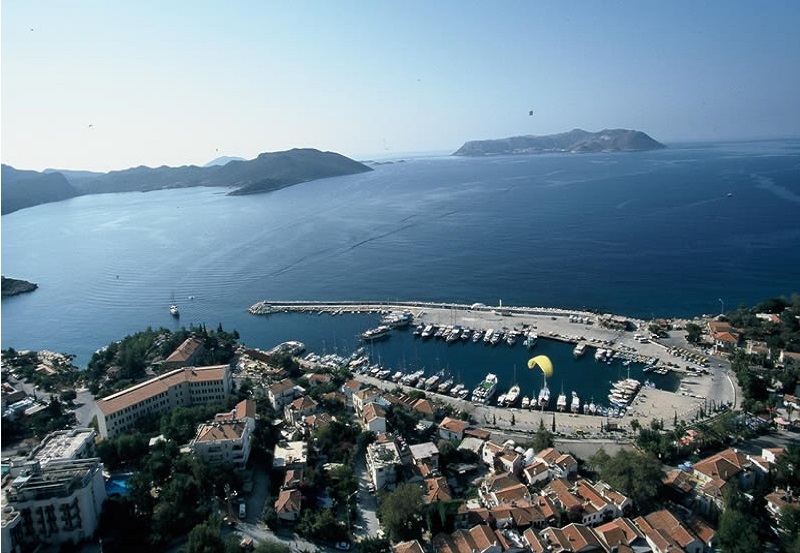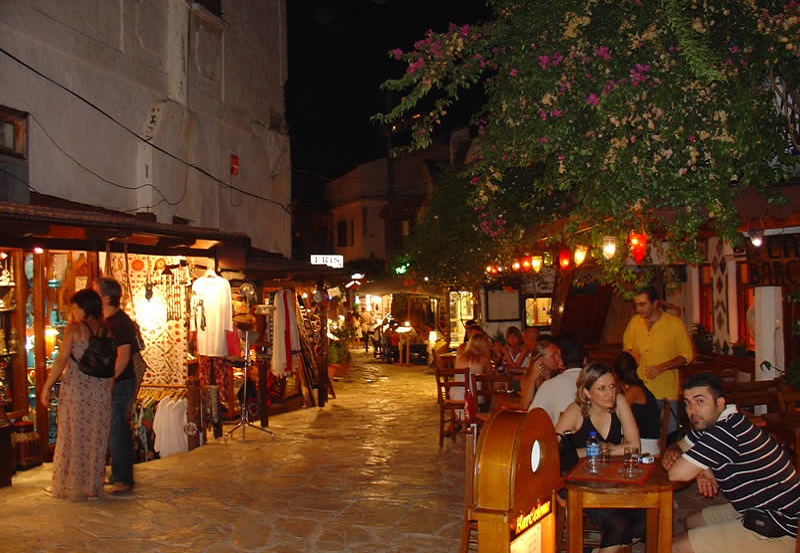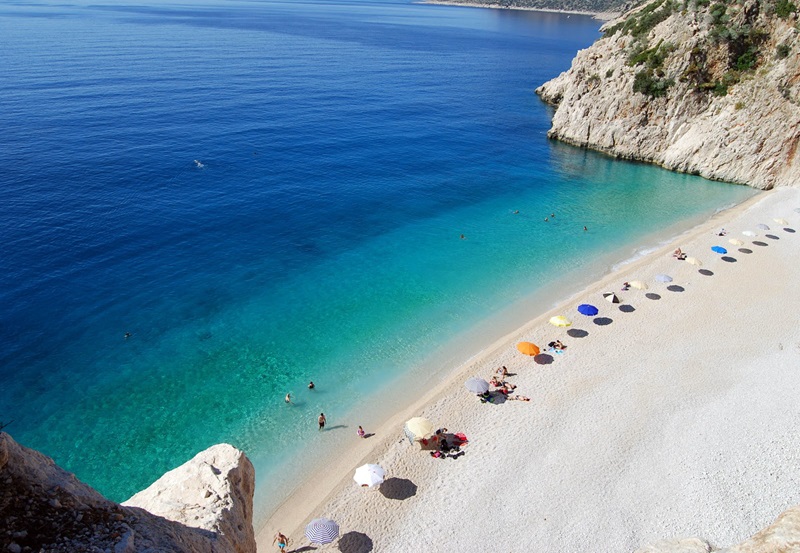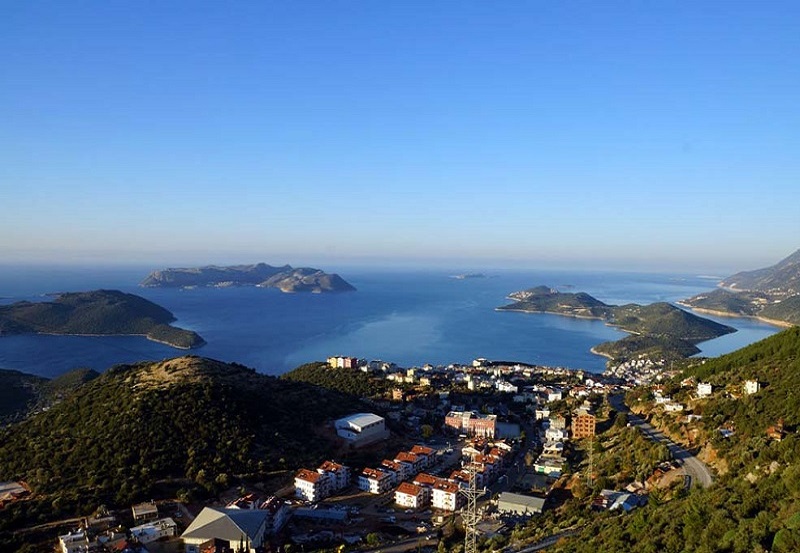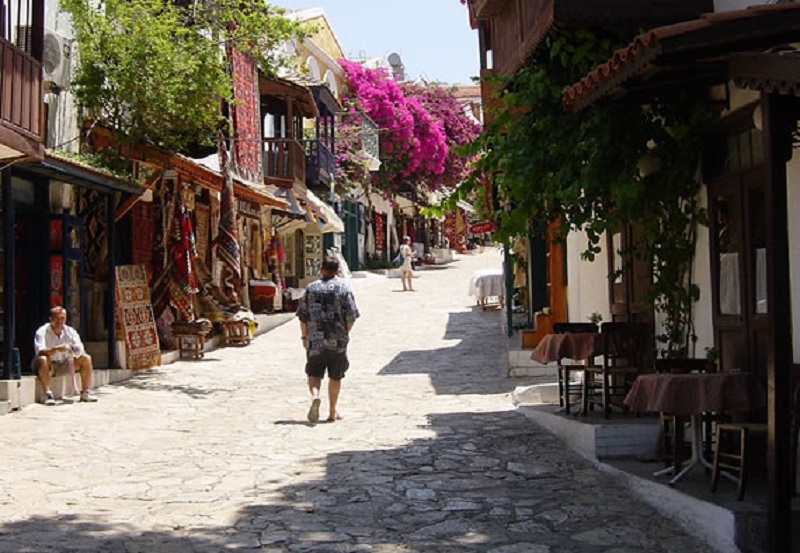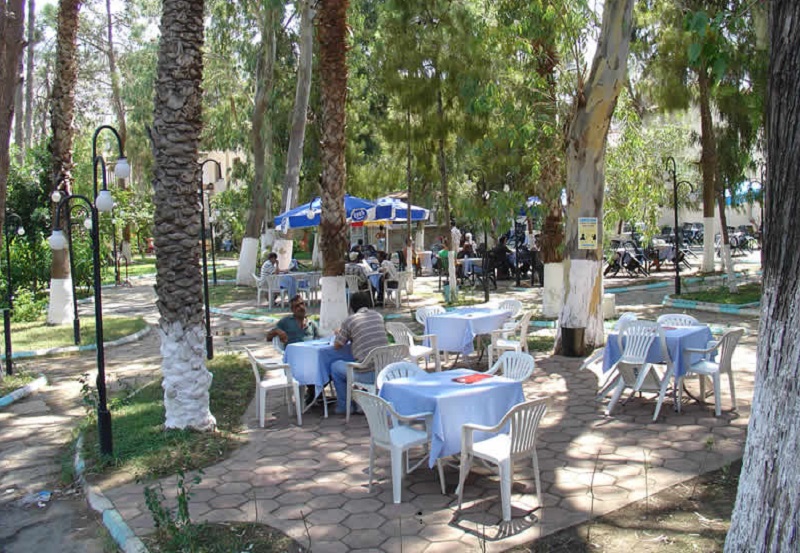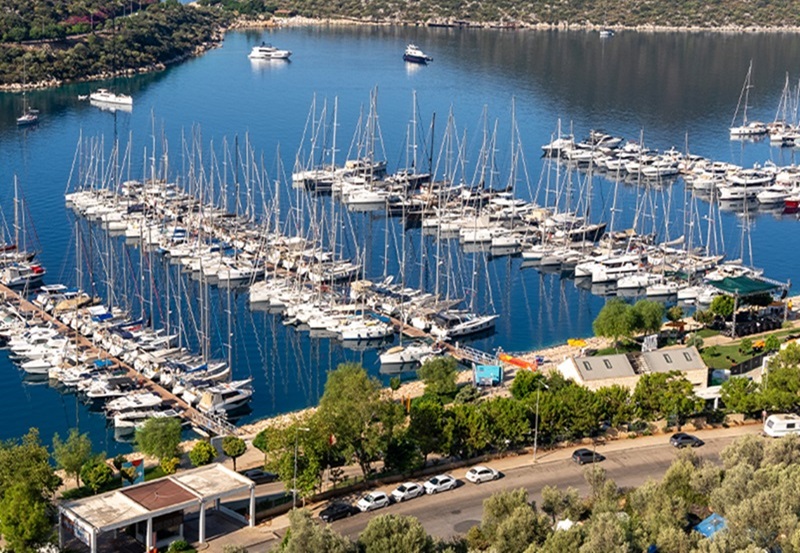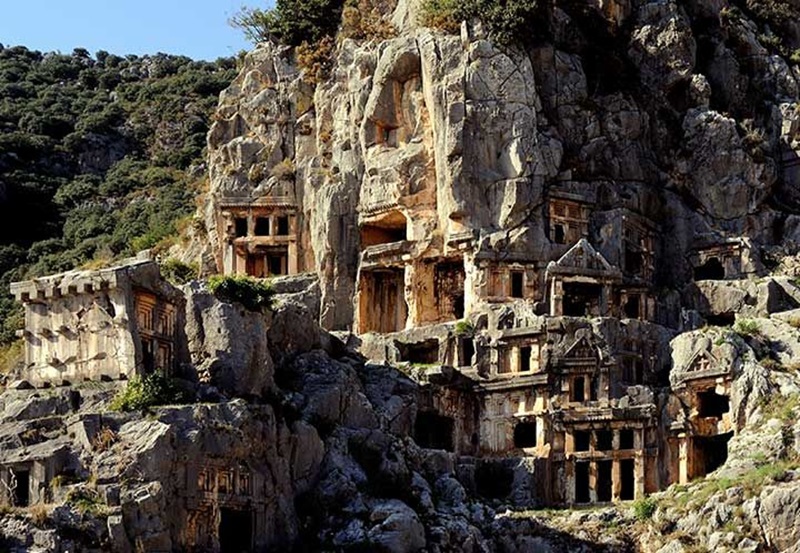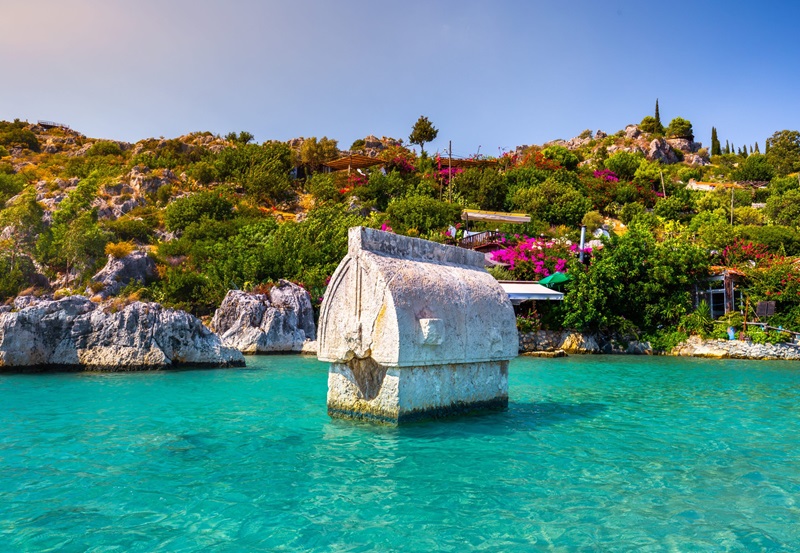Kaş is a small fishing, yachting and tourist town.
Kaş is a district of Antalya Province of Türkiye, situated 168km west of Antalya. As a tourist town it is relatively unspoiled. Kaş may be known as Türkiye's premier scuba diving destination, but with its ancient ruins, oceanside restaurants, and bougainvillea-covered houses boasting Ottoman-style balconies, the seaside town offers more than just underwater pursuits.
Antalya may be the crown of Türkiye, but Kaş is the jewel in the crown.
Geography
The town of Kaş is a little fishermen’s town on the Lycian Coast situated on a hill running down to the sea. The district has a typical Mediterranean climate of hot, dry summers and warm, wet winters, which allows the growth of oranges, lemons and bananas. The lowland areas are also planted with cut flowers and a variety of fruits and vegetables, many are grown all year round under glass. The hillsides produce honey, and almonds, while at high altitudes there are extensive pine forests. The weather is drier at high altitudes. Although agriculture is still important, tourism is the main source of income in the district, which has many hotels and guest houses. About 7km offshore from Kaş is the Greek island of Megisti (also known as Kastelórizo or Meis Adası in Turkish.
History
Although the Teke Peninsula has been occupied since the Stone Age it seems Kaş was founded by the Lycians, and its name in Lycian language was Habesos or Habesa. It was a member of the Lycian League, and its importance during this time is confirmed by the presence of one of the richest Lycian necropolis. The ancient Greeks later gave it the name of Antiphéllos or Antíphilos, since it was the harbour in front of the city of Phellos. During the Roman period, Antiphéllos was famous for exporting sponges and timber. Pliny the Elder refers to the town in the fifth book of his Naturalis Historia. After 395 the town became part of the Eastern Roman Empire (Byzantine) and during the early Middle Ages was a bishop's see - and as Antiphellus is still a titular see.
Tourism
The tourist industry is centred on the pleasant town of Kaş, but many other coastal towns and villages in the district have plenty of accommodation for visitors including Kalkan and Gelemis. The district can be reached from both Antalya and Dalaman airports. Kaş itself is a quiet pleasant town with its blue sea and narrow streets scented with jasmine flowers. There are plenty of little guest houses, quiet cafes serving home cooking, or small bars to relax after a day's scuba diving. Kaş has an annual arts festival, jazz concerts in the Roman amphitheatre and the Kiln Under the Sea arts collective have held underwater ceramics exhibitions here. Kaş is one of the leading spots for diving in Türkiye. There is a diving school, many places with equipment for hire and at the port local divers offer courses. If you decide to try diving in Kaş you can expect to see a beautiful array of fish and other sea creatures like octopus and possibly dolphins, and also the wrecks of some ancient ships.
Places of Interest
The town of Kaş has a Roman amphitheatre and many other places of historical interest; and it has spots of natural beauty, including excellent beaches, and a number of interesting caves, some of them underwater. The mountains behind the coast offer countless places for trekking, climbing and river rafting. The ruins of the ancient cities of Komba (in the village of Gömbe), Nisa, Kandyba, Phellos, Istlada, Apollonia, Isinda and Kyaenai. A popular excursion from Kaş is Kekova Island in the neighbouring district of Demre. Here in the magnificent bays you will see a surprising variety of wrecks of ancient ships and ancient cities sunk under the sea by earthquakes over the centuries. The sea is so perfectly clear that the details of city buildings such as staircases or columns can be seen from the boat. In December 2006 Kaş was added to the specially protected Kekova marine area in order to preserve its rich biodiversity.
